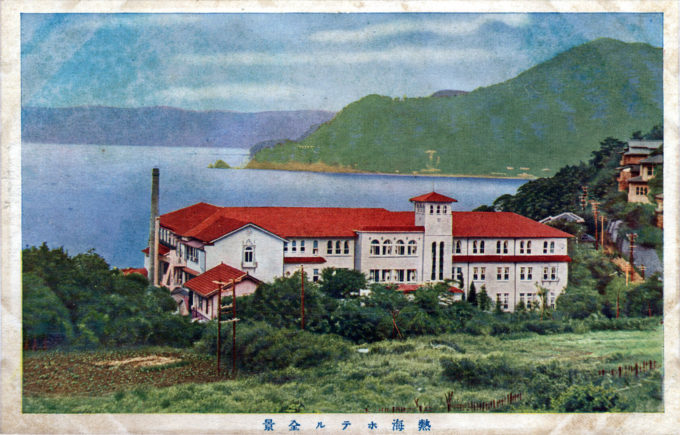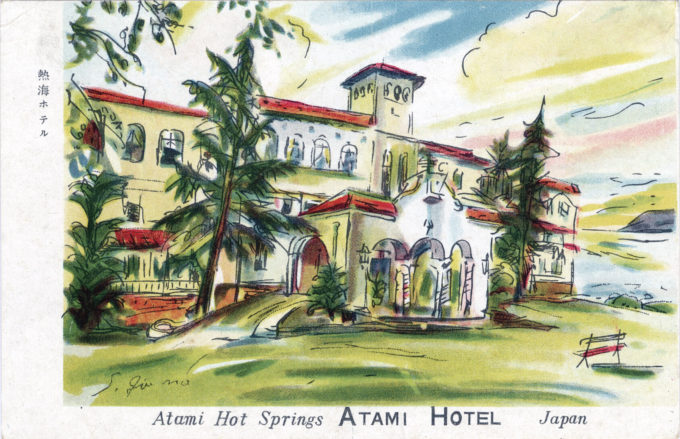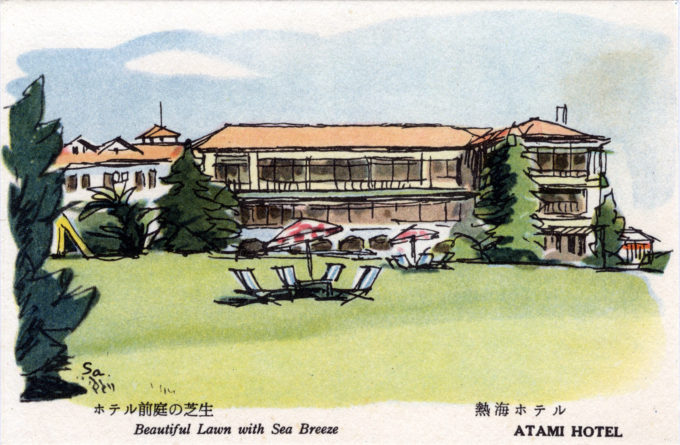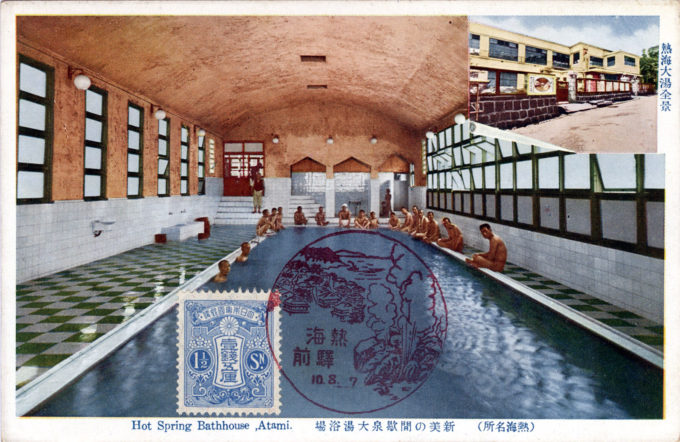See also:
Atami Hot Springs, Atami, c. 1910
“The Atami Hotel, occupying some 8 acres as its site, stands at a quiet, scenic spot of this seaside spa town, and is reputed for its vantage point to overlook a fine view of the sea and the Miura Peninsula.
“Beyond its extensive lawn garden, the hotel commands, over the emerald water of Sagami Bay, a distant view of the Miura Peninsula, and the volcanic island Oshima. Nishigaura, Uomizaki, Manazuru-misaki, Ajiro, Ito, and Hatsushima Island are also at a stone’s cast.
“The hotel is waiting for the visitors to come and take full advantage of what it has to offer. With its up-to-date facilities and quiet, homelike atmosphere, the hotel is suitable for weekend visit, honeymoon trip, and for pleasure tour.
“Atami is accessible in two hours from Tokyo by train, and the hotel is within ten minutes’ car-ride from the station.”
– Atami Hotel promotional brochure, c. 1960.
- Atami Hotel, Atami, c. 1960.
- Atami Hotel, Atami, c. 1960.
“Atami has been known as a resort town centered on its hot springs since the 8th century AD. During the reforms of the early Meiji period, in 1889, Atami village was organized. It was elevated to town status on June 11, 1894.
“The epicenter of the Great Kantō earthquake in 1923 was deep beneath Izu Ōshima Island in Sagami Bay, close to Atami, which suffered considerable damage, as did other municipalities throughout the surrounding Kantō region. A tsunami wave reaching 35 feet came ashore at Atami, swamping the town and drowning three hundred people.
“The modern city of Atami was founded on April 10, 1937, through the merger of Atami Town with neighboring Taga Village. After the proclamation of Atami as an ‘International Tourism and Culture City’ by the Japanese government in 1950, the area experienced rapid growth in large resort hotel development. This growth increased after Atami station became a stop on the Tōkaidō Shinkansen high-speed train line in 1964.”
– Wikipedia





